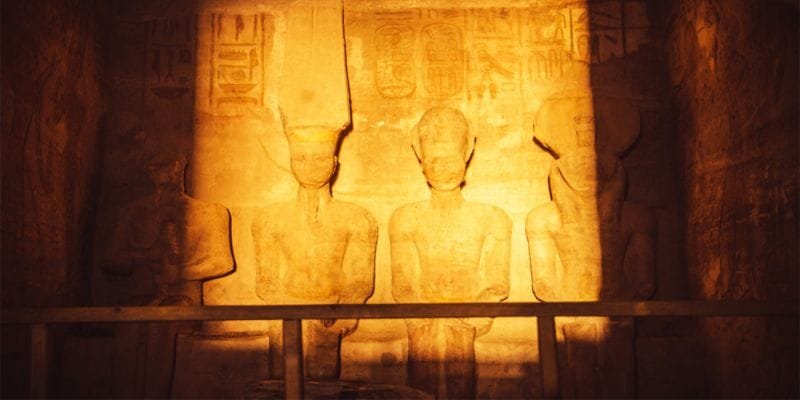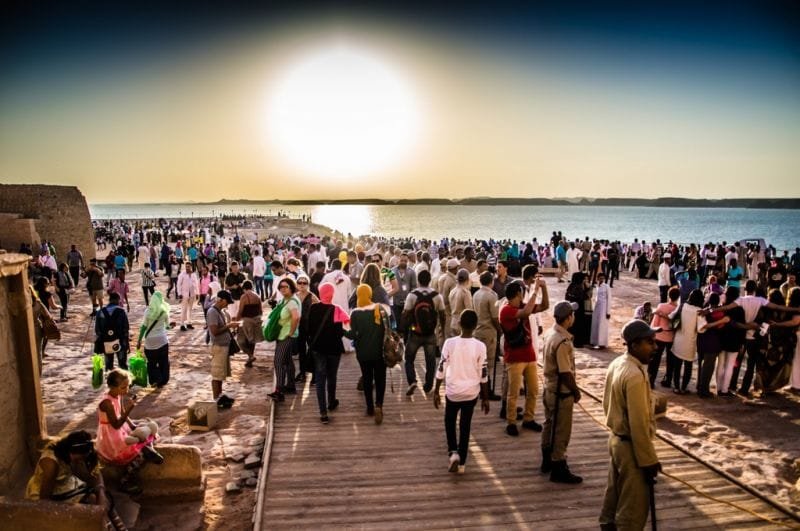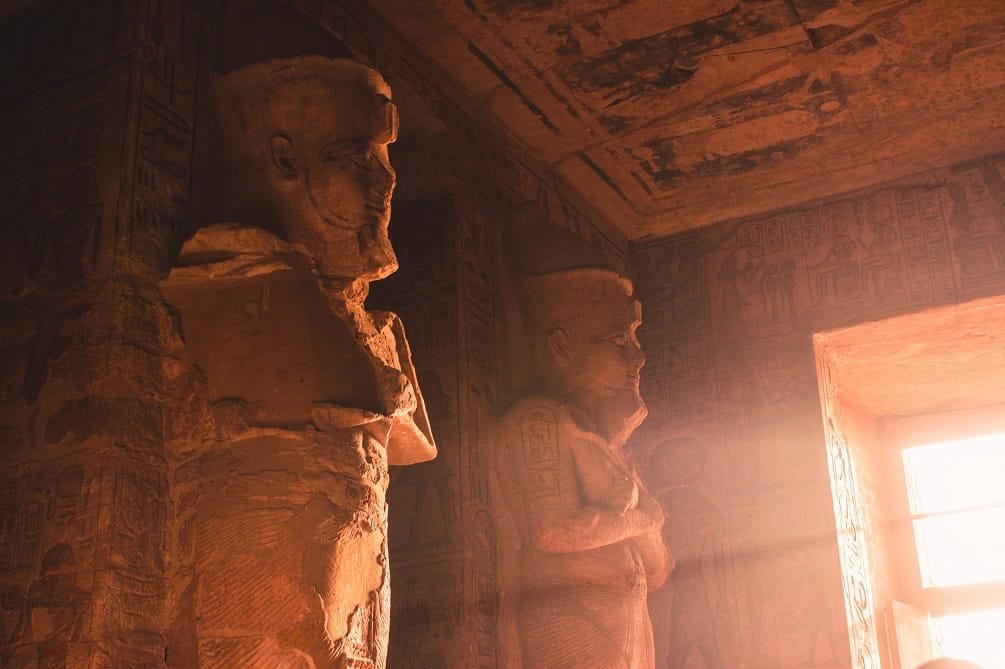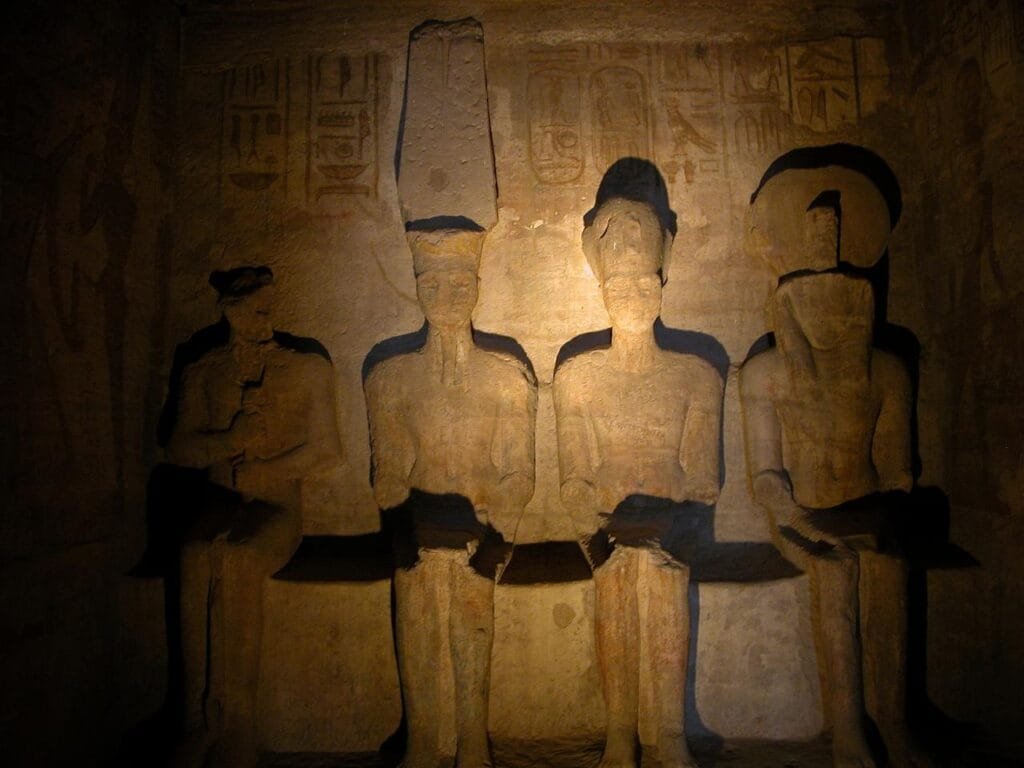The Abu Simbel Sun Festival is one of the most awe-inspiring and culturally significant events in Egypt. Held annually on February 22nd and October 22nd, this festival celebrates a unique phenomenon where the sun aligns perfectly with the faces of the statues of Pharaoh Ramses II at the Abu Simbel temples. The spectacle is a fusion of ancient Egyptian engineering, astronomy, and the timeless magnificence of Egypt’s monumental heritage.
- Egypt Tour Magic
- Egypt Tour Packages
- Excursions in Egypt
- Cairo Tours and Excursions
- Hurghada Tours and Excursions
- Soma Bay Tours and Excursions
- Makadi Bay Tours and Excursions
- Sahl Hasheesh Tours and Excursions
- El Gouna Tours and Excursions
- Marsa Alam Tours and Excursions
- Port Ghalib Tours and Excursions
- El Quseir Tours and Excursions
- Dendera and Abydos Day Tours
- Aswan Tours and Excursions
- Luxor Tours and Excursions
- Alexandria Tours and Excursions
- Sharm El Sheikh Tours and Excursions
- Top Rated Tours in 2025
- Optional Excursions in Egypt
- Private Transfer
- Blogs About egypt
- Ancient Egypt
- What You Need To know Before Your First Trip To Egypt
- Best Places to Visit in Egypt 2025
- Top Attractions in Red Sea Resorts 2025
- Top 10 Tourist Activities in Egypt
- Top 30 Activities You Can’t Miss in Egypt
- The Guide to Guided Tours in Egypt
- Egypt’s Ancient and Modern History
- The Nile River
- The Deserts of Egypt
- Historical Sites in Egypt
- Cairo
- Alexandria
- Luxor
- Aswan
- The Red Sea
- Dendera Temple
- El Fayoum Oasis
- Bahariya Oasis
- Siwa Oasis
- Al Alamein
- Marsa Matruh
- Ancient Egyptian gods
- famous Egyptian dishes
- UNESCO World Heritage sites
- About Us
- Why Egypt Tour Magic
- Egypt Tour Magic
- Egypt Tour Packages
- Excursions in Egypt
- Cairo Tours and Excursions
- Hurghada Tours and Excursions
- Soma Bay Tours and Excursions
- Makadi Bay Tours and Excursions
- Sahl Hasheesh Tours and Excursions
- El Gouna Tours and Excursions
- Marsa Alam Tours and Excursions
- Port Ghalib Tours and Excursions
- El Quseir Tours and Excursions
- Dendera and Abydos Day Tours
- Aswan Tours and Excursions
- Luxor Tours and Excursions
- Alexandria Tours and Excursions
- Sharm El Sheikh Tours and Excursions
- Top Rated Tours in 2025
- Optional Excursions in Egypt
- Private Transfer
- Blogs About egypt
- Ancient Egypt
- What You Need To know Before Your First Trip To Egypt
- Best Places to Visit in Egypt 2025
- Top Attractions in Red Sea Resorts 2025
- Top 10 Tourist Activities in Egypt
- Top 30 Activities You Can’t Miss in Egypt
- The Guide to Guided Tours in Egypt
- Egypt’s Ancient and Modern History
- The Nile River
- The Deserts of Egypt
- Historical Sites in Egypt
- Cairo
- Alexandria
- Luxor
- Aswan
- The Red Sea
- Dendera Temple
- El Fayoum Oasis
- Bahariya Oasis
- Siwa Oasis
- Al Alamein
- Marsa Matruh
- Ancient Egyptian gods
- famous Egyptian dishes
- UNESCO World Heritage sites
- About Us
- Why Egypt Tour Magic
Experiencing the Abu Simbel Sun Festival: A Magical Celebration of Ancient Egypt's Astronomical Wonders

A Journey to Abu Simbel: The Temple of Ramses II
Abu Simbel, located in the southern part of Egypt near the Sudanese border, is home to two magnificent temples constructed by Pharaoh Ramses II during the 13th century BC. The larger temple is dedicated to the pharaoh himself and is one of Egypt's most iconic monuments. The temple features four colossal statues of Ramses II at its entrance, each measuring around 20 meters in height. These statues stand as guardians of the temple, facing the Nile River and the desert beyond. The smaller temple, dedicated to Ramses II’s queen, Nefertari, is equally impressive but on a smaller scale. It features statues of Nefertari and Ramses II standing side by side, symbolizing their powerful and affectionate relationship. The temple is adorned with detailed carvings and paintings, making it a masterpiece of ancient Egyptian architecture. Getting to Abu Simbel from Aswan, the nearest major city, involves either a 3-4 hour drive or a flight, making the site relatively remote. Despite this, it attracts thousands of visitors annually, particularly those coming to witness the Abu Simbel Sun Festival. The temples are also part of Egypt’s rich cultural heritage, as they were relocated during the 1960s to prevent them from being submerged by the rising waters of Lake Nasser caused by the construction of the Aswan High Dam. This colossal effort was a triumph of both archaeology and engineering, ensuring the preservation of one of Egypt’s greatest wonders.

The Sun Festival Phenomenon
The Abu Simbel Sun Festival is a rare astronomical event that occurs twice a year, on February 22nd and October 22nd, when the rays of the rising sun penetrate the inner sanctum of the temple. As the sunlight enters the temple, it illuminates the statues of Ramses II and the gods Ra-Horakhty, Amun, and Ptah, while Ptah remains in shadow. This alignment is a testament to the advanced understanding the ancient Egyptians had of astronomy and their deep connection to the cosmos. This solar alignment was not a mere accident; it was meticulously planned by the architects and priests of ancient Egypt to mark two important dates in Ramses II’s life. The date of February 22nd corresponds to his coronation day, while October 22nd marks his birthday. On these dates, the sun would shine directly on the statues of Ramses II, reinforcing the idea that the pharaoh was favored by the gods, and it symbolized his divine rule over Egypt. The fact that this alignment still occurs every year, despite the relocation of the temples in the 1960s, is a testament to the precision of ancient Egyptian engineering. The temples were carefully moved and realigned to ensure that the phenomenon would continue to be witnessed for generations. The spectacle of the sun illuminating these statues is not just a marvel of architecture but also a deeply symbolic and spiritual moment, representing the eternal connection between the pharaoh, the gods, and the land of Egypt.

How the Festival Is Celebrated
The Abu Simbel Sun Festival is not just about the solar alignment—it’s a celebration of Egypt’s ancient culture and heritage. On the day of the festival, the atmosphere around the temples becomes electric, as crowds of locals and tourists gather to witness the solar phenomenon. The event is usually accompanied by music, traditional dances, and cultural performances, which add to the sense of festivity and excitement. Visitors typically arrive at Abu Simbel in the early hours of the morning to secure a good viewing spot. The sun rises over the desert, casting its first rays on the statues, and the crowd holds its breath as the light begins to illuminate the inner sanctum of the temple. As the sun’s rays touch the faces of Ramses II and the gods, the crowd erupts in awe, capturing the moment on camera and marveling at the precision of the ancient architects. While the solar alignment is the main attraction, there are also other cultural activities during the festival. Local Egyptian musicians perform traditional folk songs, and dancers perform ancient Egyptian dances, creating an immersive cultural experience. Additionally, tourists and locals alike celebrate the occasion by enjoying Egyptian cuisine and participating in activities that reflect Egypt’s ancient traditions. This combination of history, culture, and celebration makes the Abu Simbel Sun Festival a truly unforgettable experience for anyone lucky enough to attend.

The Historical Significance of the Festival
The Abu Simbel Sun Festival is not only a remarkable solar event but also a symbol of ancient Egypt's sophisticated understanding of astronomy and religion. The alignment of the sun with the statues of Ramses II was likely designed to reinforce the idea that the pharaoh was divinely chosen by the gods. This was important in a society where the pharaoh’s legitimacy and power were directly tied to divine approval. The festival is thought to commemorate two key events in Ramses II's life: his coronation (on February 22nd) and his birthday (on October 22nd). These dates were significant not only for Ramses II but also for the entire kingdom, as they marked times of renewal and divine favor. The festival would have been a time of great celebration and feasts, where the pharaoh’s relationship with the gods was reaffirmed, and his reign was celebrated by the people. In modern times, the festival continues to hold cultural and historical significance, not just for Egyptians, but for people worldwide who come to witness this incredible event. The solar alignment is also an enduring symbol of the ancient Egyptians’ profound connection to nature and the cosmos, and their ability to harness that understanding in their monumental architecture. Additionally, the relocation of the Abu Simbel temples in the 1960s is a testament to the commitment to preserving Egypt’s cultural heritage. The temples, once at risk of being submerged by the waters of Lake Nasser, were carefully moved to higher ground and realigned to ensure that this extraordinary phenomenon could continue for future generations to experience. The successful relocation of the temples remains a landmark achievement in both archaeology and engineering.

Tips for Attending the Abu Simbel Sun Festival
If you’re planning to experience the Abu Simbel Sun Festival, here are some tips to help you make the most of your visit:
Plan Early: The festival draws large crowds, so it’s important to book your accommodation and travel arrangements well in advance. Most travelers will first head to Aswan, where they can either take a flight or a long drive to Abu Simbel.
Arrive Early: Arriving early will give you the best chance to secure a good spot for viewing the solar alignment. Most visitors arrive at the temples in the early hours of the morning to witness the sunrise.
Stay Hydrated and Prepare for the Heat: Abu Simbel is located in a desert region, so the temperature can get quite hot. Be sure to bring plenty of water, sunscreen, and comfortable clothing. It’s also advisable to wear hats or carry an umbrella to shield yourself from the sun.
Respect the Sacred Site: The Sun Festival is a significant cultural and spiritual event. While it’s tempting to take photographs, remember to be respectful of the people around you and the sacredness of the site. Using a zoom lens for photos will help you capture the event without disturbing others.
Engage with Local Guides: To fully appreciate the significance of the event, take the time to speak with local guides. They can offer fascinating insights into the history and meaning behind the solar alignment and the ancient Egyptian practices that led to the creation of the Abu Simbel temples.

The Cultural and Spiritual Impact of the Festival on Visitors
The Abu Simbel Sun Festival is not only a remarkable historical and astronomical event but also an experience that deeply resonates with visitors on a cultural and spiritual level. As the sun's rays gradually illuminate the statues of Ramses II and the gods, there’s a palpable sense of awe and wonder that sweeps over the crowd. This moment serves as a powerful reminder of the ancient Egyptians' deep spiritual connection to the cosmos and the divine. For many attendees, particularly those with an interest in ancient Egyptian spirituality, the festival offers a unique opportunity to witness firsthand how the ancient Egyptians used astronomical events to affirm their relationship with the gods. The idea that the sun itself, the life-giving force, would illuminate the faces of the pharaoh and gods is a vivid symbol of divine approval, reinforcing the idea that the king was the earthly representative of the gods. The festival's atmosphere is one of reverence, even for those who are not deeply religious or spiritual. The sheer magnitude of the solar alignment, combined with the knowledge that this same event occurred thousands of years ago, creates a profound connection between the past and the present. Visitors from all over the world often speak of a sense of personal transformation or reflection as they witness this extraordinary phenomenon. For some, it's a moment of spiritual awakening, while for others, it’s simply a humbling reminder of the wonders of the ancient world. Furthermore, the event attracts visitors of all ages, from young children experiencing the awe of history to older generations who have long been fascinated by Egypt’s legacy. It’s an opportunity to unite people from different cultures and backgrounds in celebration of a shared human heritage. The Abu Simbel Sun Festival thus not only offers a glimpse into the past but also becomes a shared experience that connects everyone present to the timeless history and spirit of Egypt.


